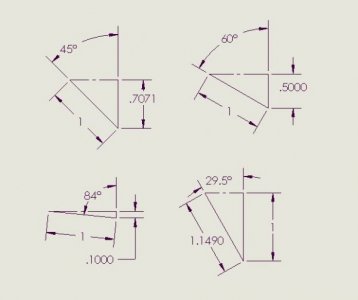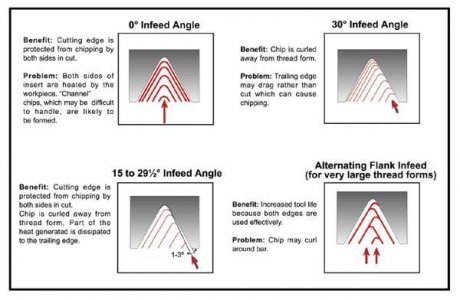- Joined
- Feb 1, 2015
- Messages
- 9,984
Kevin, the paths of the cross slide and compound describe a right triangle with the com[pound path being the hypotenuse. From trigonometry, the cosine of the include angle is the side adjacent/hypotenuse. For every .001" that the compound is advance, the tool is advanced .001 times the cosine of the included angle. Because congruent triangles maintain the same ratio between the lengths of the sides, the ratio holds regardless of distance traveled. Here is a drawing of some of the more popular compound angle settings.Please explain further as my wife and I are going crazy now trying to understand this. She is a math teacher with many years under her belt.
Sent from my LGLS991 using Tapatalk


